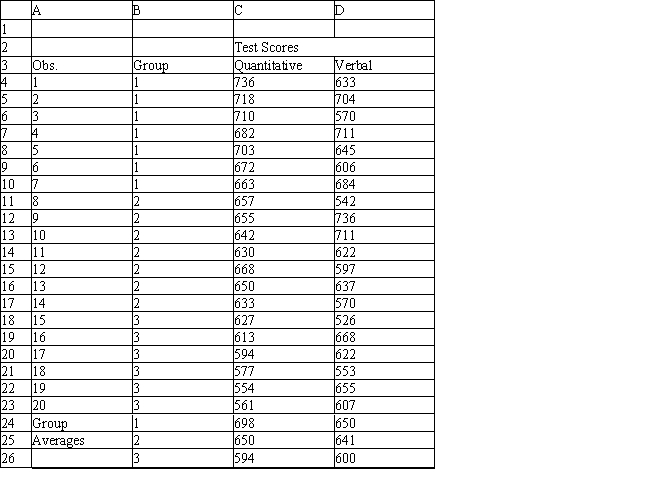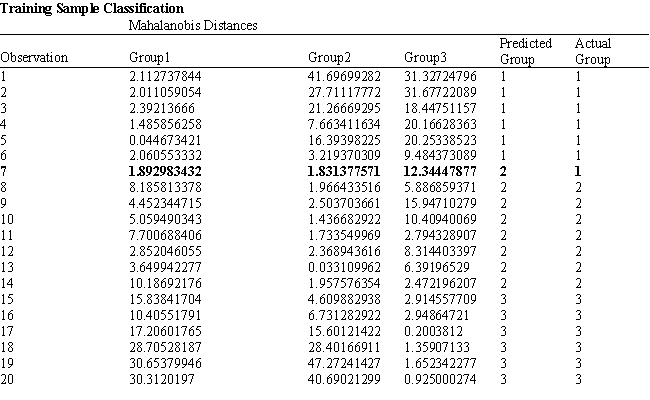Exhibit 10.2
The following questions are based on the problem description and the output below.
A college admissions officer wants to evaluate graduate school applicants based on their GMAT scores, verbal and quantitative. Students are classified as either successful (Group 1) , marginally successful (Group 2) or not-successful (Group 3) in their graduate studies. The officer has data on 20 current students, 7 successful (Group 1) , 6 marginally successful (Group 2) and 7 not successful (Group 3) . 




-Refer to Exhibit 10.2. What percentage of observations is classified incorrectly?
Definitions:
Confidence Interval
A statistical range, computed from sample data, believed to encompass the actual value of a population parameter.
Normal Distributed
A statistical distribution where observations are equally distributed around the mean, creating a bell-shaped curve.
Significance Level
The threshold below which a p-value is considered statistically significant, typically set at 0.05 or 5%.
Random Sample
A selection made from a group where each individual has the same probability of being chosen.
Q7: Pure IP formulation requires that:<br>A)all decision variables
Q25: How many arcs are required to make
Q40: A hard constraint<br>A)cannot be violated<br>B)may be violated<br>C)is
Q45: The PsiTarget. )function in Analytic Solver Platform<br>A)returns
Q57: In NLP a local optimum is best
Q67: Refer to Exhibit 11.3.What is the exponential
Q69: Solve the following minimal spanning tree problem
Q70: A good way to fit the distribution
Q83: Refer to Exhibit 14.4.What formula should go
Q86: In the k nearest neighbor technique,a large